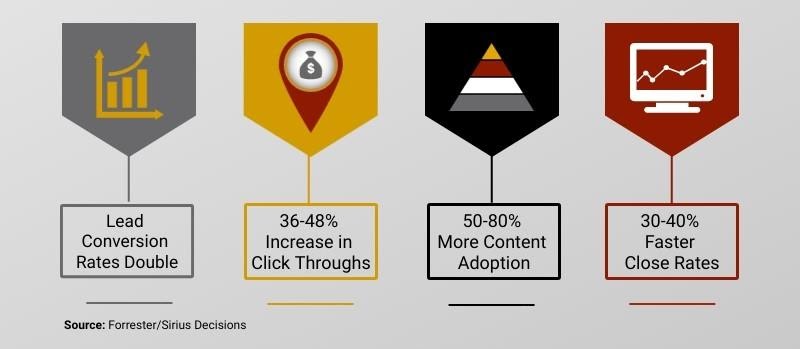It’s been seven years since I started The Buyer Persona Blog, and I am pleased to publish our very first guest post. I hope you enjoy these recommendations from Irakli Beselidze, CEO of Premier SV in Russia, presenter of Marketing Guru TV show, and now a Certified Practitioner of Buyer Persona Institute.
 It’s rash to conclude that the concept of target audience is a meaningful tool for building a marketing strategy. Just because someone is a member of a socio-demographic group doesn’t mean they’ll buy your products. People buy because they want to improve something about their lives, or their business, with the help of your solution, and you need to know how they think about that.
It’s rash to conclude that the concept of target audience is a meaningful tool for building a marketing strategy. Just because someone is a member of a socio-demographic group doesn’t mean they’ll buy your products. People buy because they want to improve something about their lives, or their business, with the help of your solution, and you need to know how they think about that.
Have you ever woken up with the idea that you belong to a particular target audience, and must consume marketing messages no less than three times a week in order to decide which product to purchase? Absolutely not! People focus on how to solve their current problems, and they don’t want to be distracted by anything that doesn’t help them make a good decision.
While developing a marketing strategy, it’s crucially important to understand what problems people think they will solve by using your product and what communication context unites them during their decision-making process. To identify and provide a structured description of the context a person delves into during the buying process, Premier SV conducts qualitative research on buyers. The result is a detailed description: a buyer persona. It’s these personas that should serve as the basis for developing a communication strategy.
Here are six situations where buyer personas are a much better tool than a target audience that is determined by socio-demographic characteristics.
1. Your products aren’t spontaneously purchased within 10 minutes of discovery. Your buyers prefer to evaluate all possible options because the consequences of making the wrong decision are costly.
If we are dealing with a high-consideration purchase, branding based on knowledge of your target audience and spontaneous brand awareness are no guarantee buyers will choose you. Often, these consumers will ignore your slogans and advertising messages to rely on objective reviews from your former clients, their friends and coworkers.
2. Your target audience includes a lot of people who are not a potential customer.
If only 1 out of 10 people in your target audience needs your solution, while the other 9 aren’t prospects, it means you simply waste 90% of your efforts and resources. Though you may increase your brand awareness among your target audience and eventually increase sales, it’ll be impossible to identify if this is the direct result of your marketing campaign.
3. Your marketing activities are repetitive and very similar to your competitors.
Since companies in direct competition have the same target audience, it’s unlikely that they’ll have distinctive strategies for marketing campaigns. The result can be intense competition of creative ideas which aren’t relevant to the buyers’ context, but are just focused on framing the solution in new and exciting ways. This might not seem bad, but the further you are from the buyer’s context, the less likely the buyer will understand you and your messaging. Your marketing should be specific, clear and concise, and focus on how you’ll solve your buyers’ real problem.
4. You’re not exactly sure what people need to hear to choose you.
Messaging for target audience and buyer personas are different as in the first case you’re talking about the product while in the second case – about solving a problem. For example, a well-known slogan created by Premier SV for Herschi-Cola’s target audience of 10-20 year olds was “Herschi-Cola – the taste of victory.” While clever, it doesn’t reveal any particular reason for buyers to choose it. The same goes for the slogan “Always Coca-Cola” – it is just a way to show the value of the product, without paying attention to the context of its purchase. That’s why the winner in these messages’ battle will be the one with a bigger media budget.
Premier SV has decided not to participate in these competitions anymore. After analyzing Onduline’s buyer persona, we’ve transformed the slogan for their roofing materials and male target audience of 30-55 year olds from “Doesn’t rust, doesn’t leak, doesn’t make noise” to “Onduline – easy roof repair”. We’ve stressed the core value for buyers – the simplicity of solving the problem of a leaky roof as it stacks up to other options.
5. You’re not sure if you’ve chosen the right communication channels.
It’s difficult to find a brand that’s 100% sure their chosen media plan is the best, even if their marketing campaign is already in place. The reason why we’re unsure can be connected to an inability to understand how communication channels affect a consumer’s decision to buy a product. Traditional effectiveness metrics only reveal the number of contacts within your target audience, but no one understands how these contacts transform into an interest in a product or sales.
You won’t have these problems with buyer personas, because they uncover the sources of buyers’ decisions at each stage of the buying cycle, and identify the particular sources of information that influenced the decision.
6. Your target audience is mixed, or decisions are made by a group of people belonging to different socio-demographic groups.
The classic example of this situation appeared in Premier SV when we were researching buyers for the latest model of Toyota RAV4. We found that in most cases, both men and women contributed to the final decision to purchase the car. Additionally, in most cases both parties had equal weight in the buying process, but opposite evaluation criteria. What should be done in cases like these? Since Toyota is focused on traditional marketing methods, they decided to concentrate on male buyers. Typically, men and women use different sources of information and perceive the RAV4’s merits differently, so they decided to ignore the section of their target audience which wasn’t perceived as important.
B2B brands can also encounter the need to target 5-6 people with varying job titles, who work in different departments and all influence the decision-making process. Curious how to solve this problem?
Give up the idea of using your target audience as a tool for identifying decision makers, and start studying buyer personas. This will help you identify their roles in the decision-making process, evaluation criteria and many other factors that help buyers differentiate you from others and assure them that your product will make their life better.
Each year consumers become more savvy and sophisticated in making purchase decisions. To continue influencing them efficiently, you need to better study their behavior in the process of buying your product. Buyer personas are a step forward in this direction. When you research your buyer’s decisions, you’ll understand your buyers and create more effective marketing communications.
Has your company already interviewed buyers to build buyer personas? What was the most challenging part? Please share your ideas with us.





